Here is the last in my series of the Century Series builds, the F-106A Delta Dart, the ultimate interceptor.
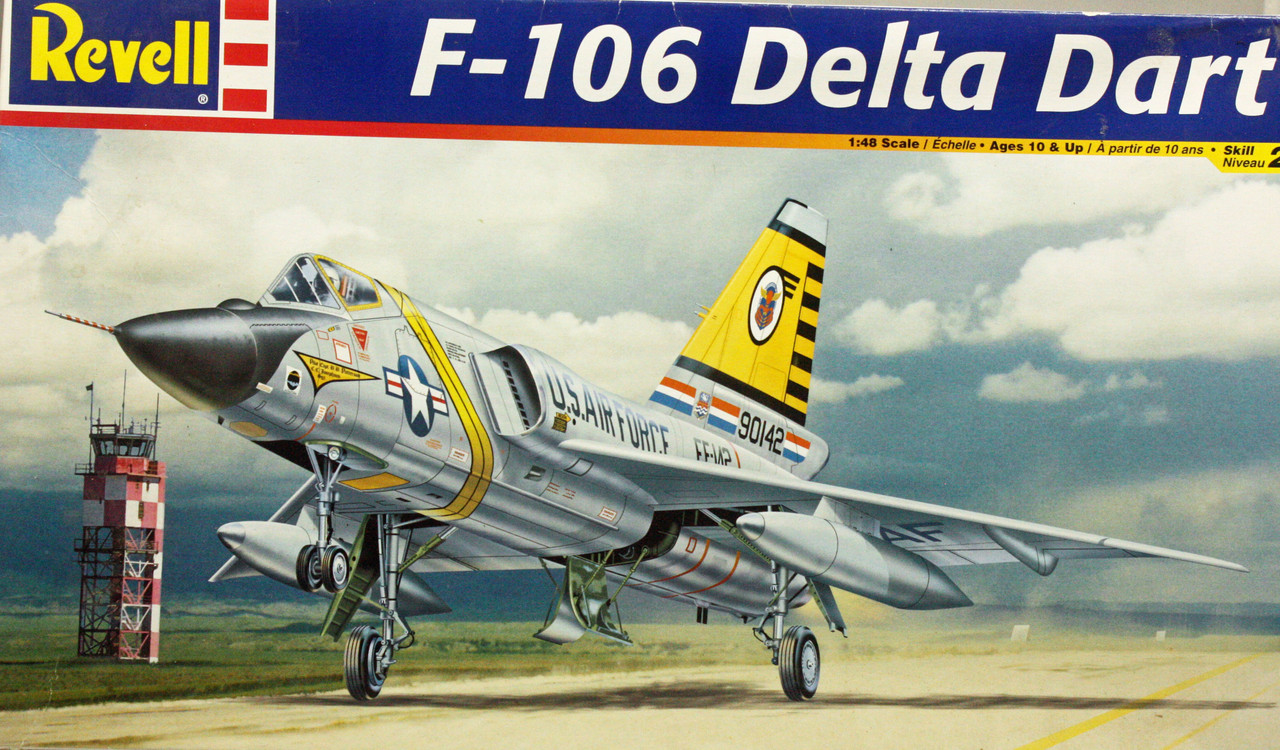
At the time this kit was initially released, I believe in 1983, I was in high school and much more interested in girls, baseball, and my 8mm movie camera. I had built models since I was three, but essentially took time away from modeling while in high school and through the majority of my years at Texas A&M (although I did build 3 jets during that time). About a decade ago, the family that lived across the street had the oldest son who was interested in building models, and I had him over a few times to get him started. The -106 was one of the kits that he built under my tutelage. I do recall him having some issues with the fit in the kit, and with that in mind, I undertook to ensure that I overcame those issues.
I did find the same fit issues that my young neighbor did, particularly in mating the upper and lower fuselage halves. I did a lot of sanding and had to use substantial putty to fill in seams and even a gap or two. I sanded the putty ... but insufficiently, as it turns out. Photos don't reveal the very clearly evident putty along those fuselage seams that priming and painting did not hide; this was a sign to me that I was moving way too fast, too impatient, whatever, and should have set it aside, taken a break, to clear my head. But as I said, the photos don't really show the problem that one can clearly see in person, so I opted to leave it be.
The putty problem was just one issue I had here. Another stumbling block was my use of white Stynylrez for the prime coat. It wasn't so much the prime itself as it was the white, which had the effect of lightening the ADC gray to the point that the gray appears more like a '50s-'60s US Navy gray. The paint is noticably lighter in tone than her sister ships, the -101 and -102, painted with the same Mission Models ADC gray but applied over a gray Stynylrez primer rather than the white.
I used the Mission Models ADC Gray, plus Mission Models Interior Green, Model Master Acryl Gunship Gray, Tamiya Semi-Gloss Black, Vallejo Chrome Yellow, Vallejo Tire Black, Vallejo Red, and Vallejo White for the paint. The metallics came from Vallejo Metallics Aluminum, Model Master Metalizer Jet Exhaust and Model Master Metalizer Titanium. I did no weathering on this bird as everything I read indicated ground crews kept these Darts very clean.
Decals were from the kit sheet; they went on fine but I had a problem with the US Air Force on the starboard side. While doing another section of the aircraft, a portion of the OR literally stuck to my finger and ripped away. Thankfully the rip was in one piece, and I was able to get it back into position, but not exactly aligned right, and the part resisted my efforts to re-position it correctly. I opted to leave it as is rather than risk tearing that decal further.
Build pictures:
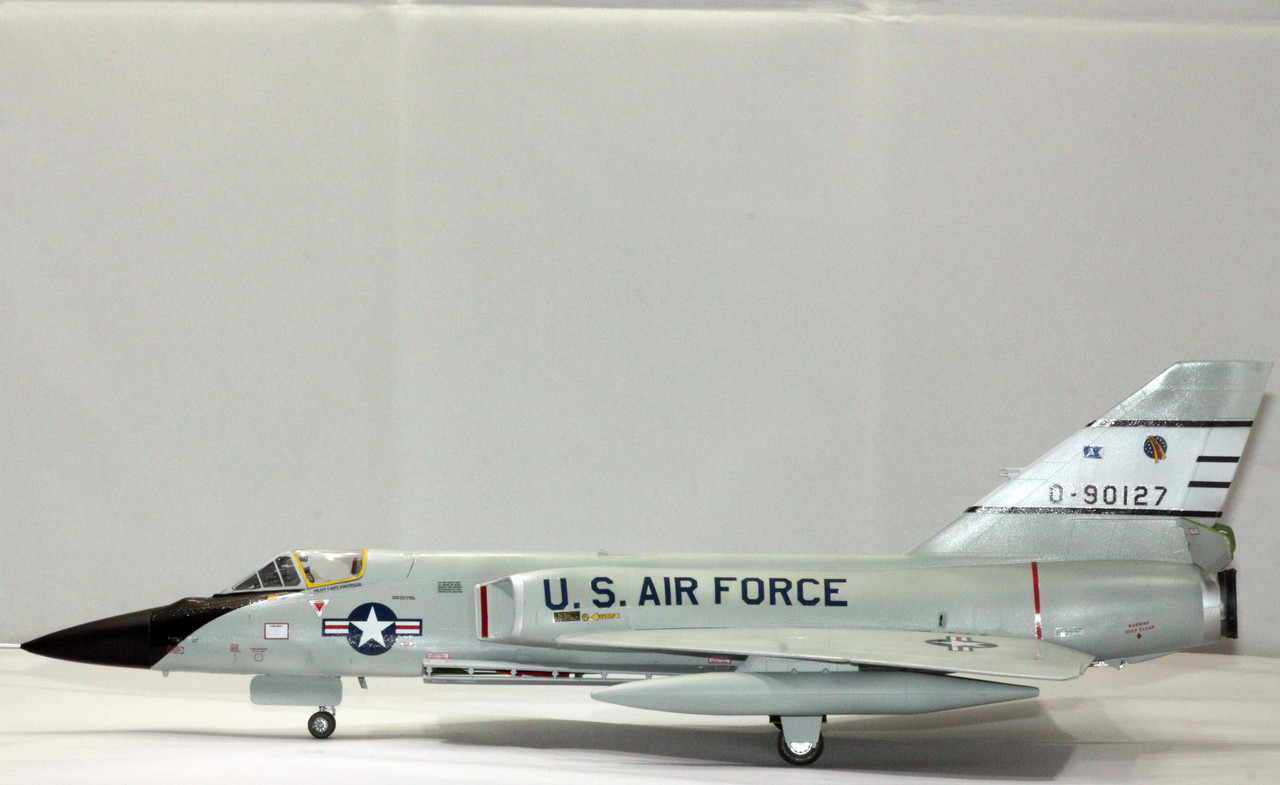
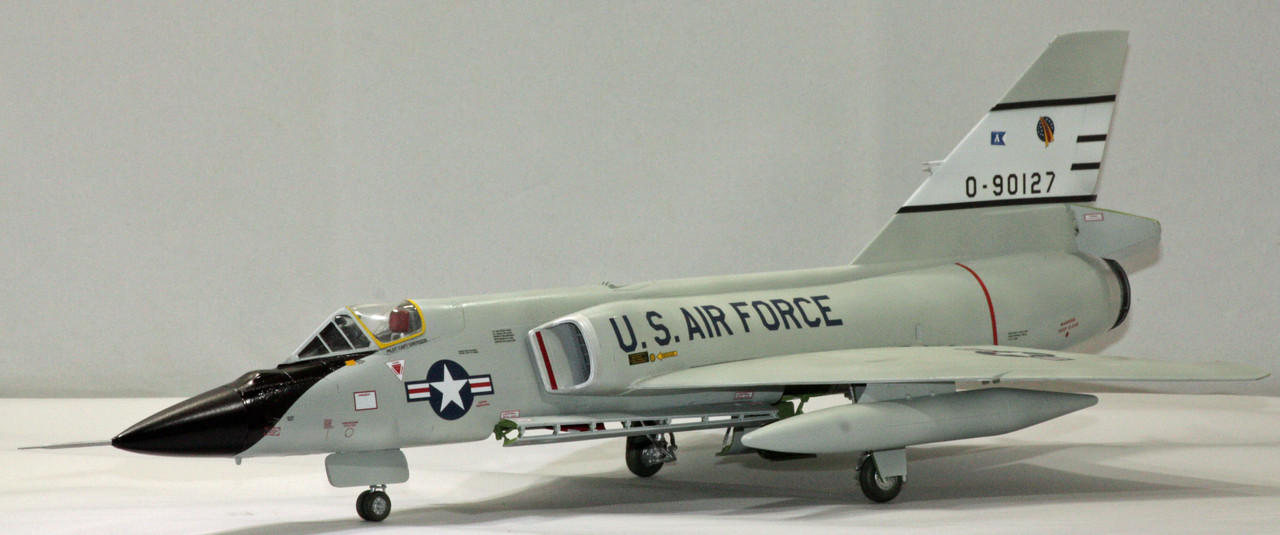
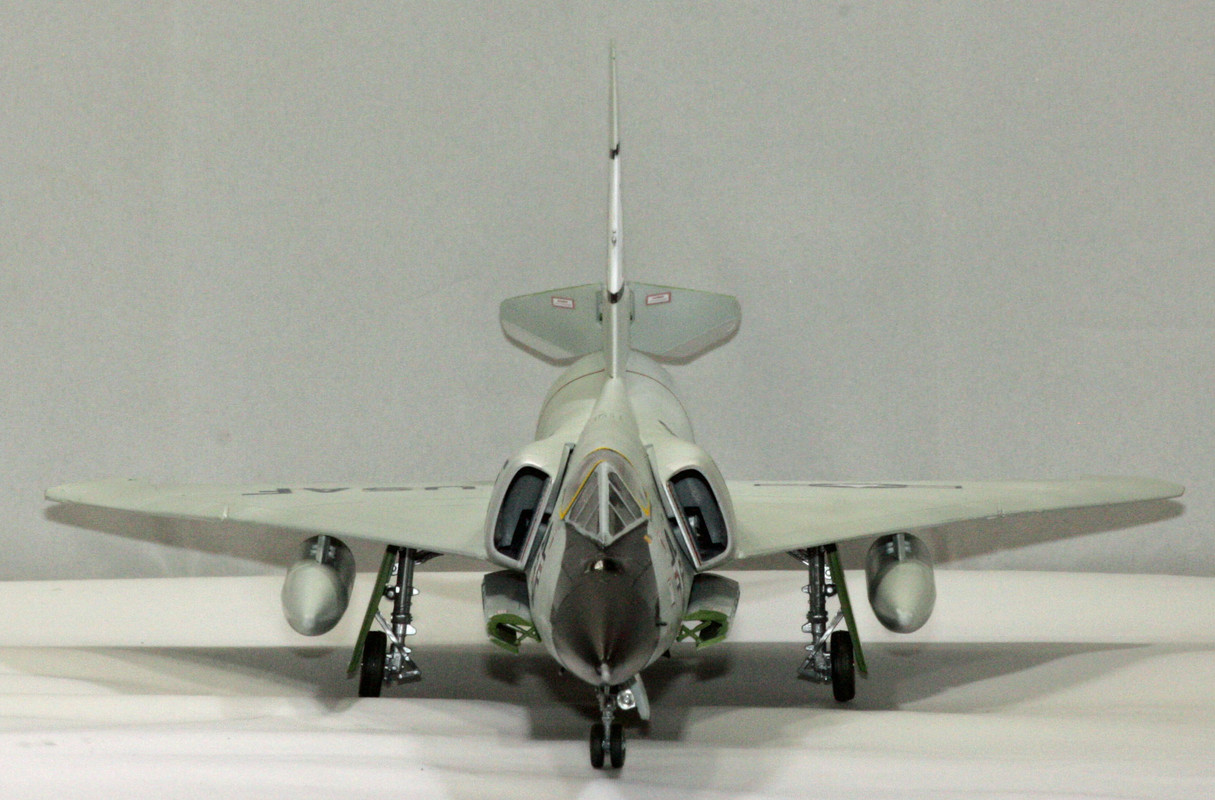
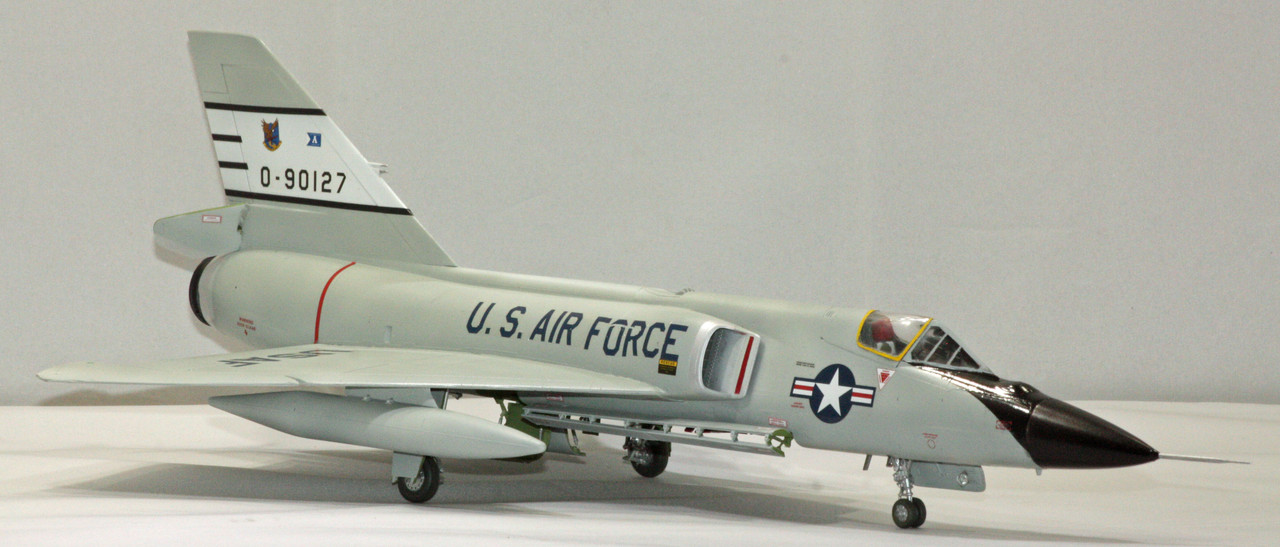
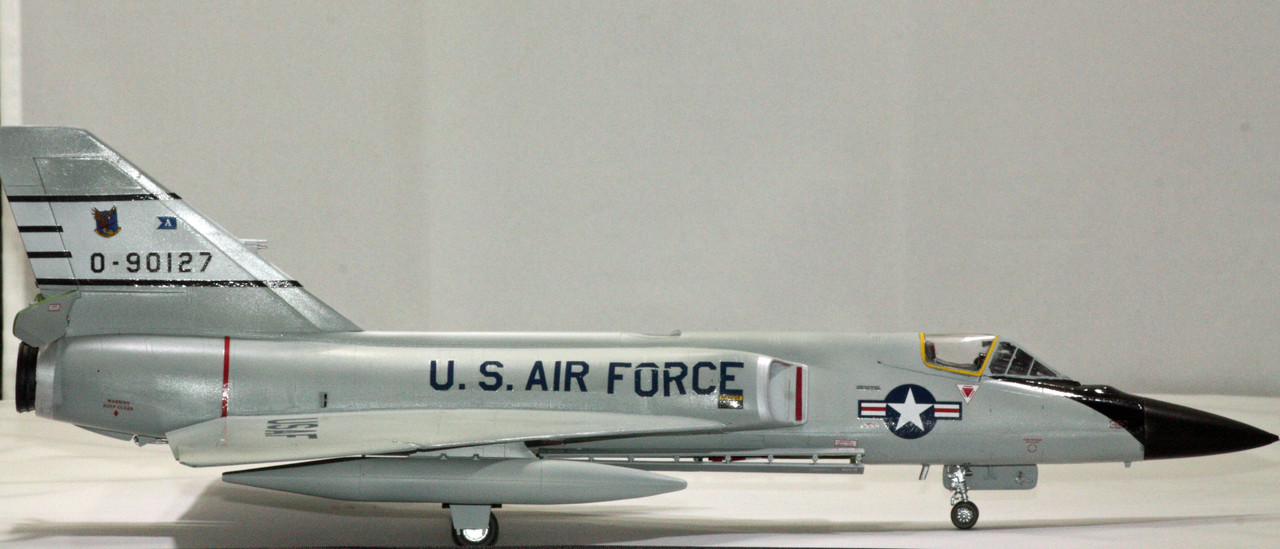
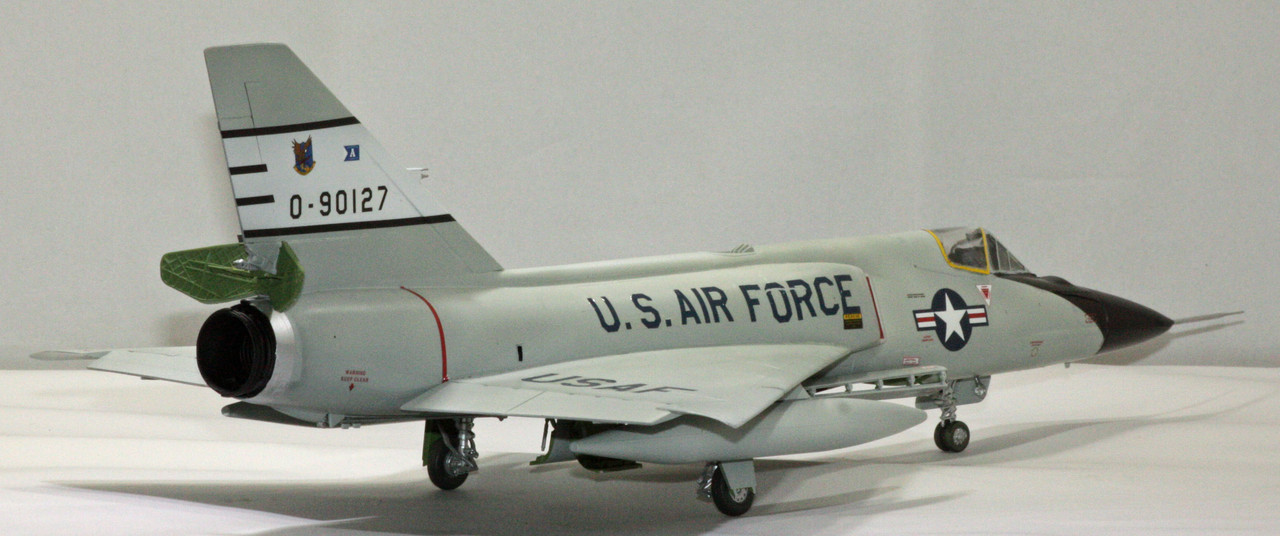
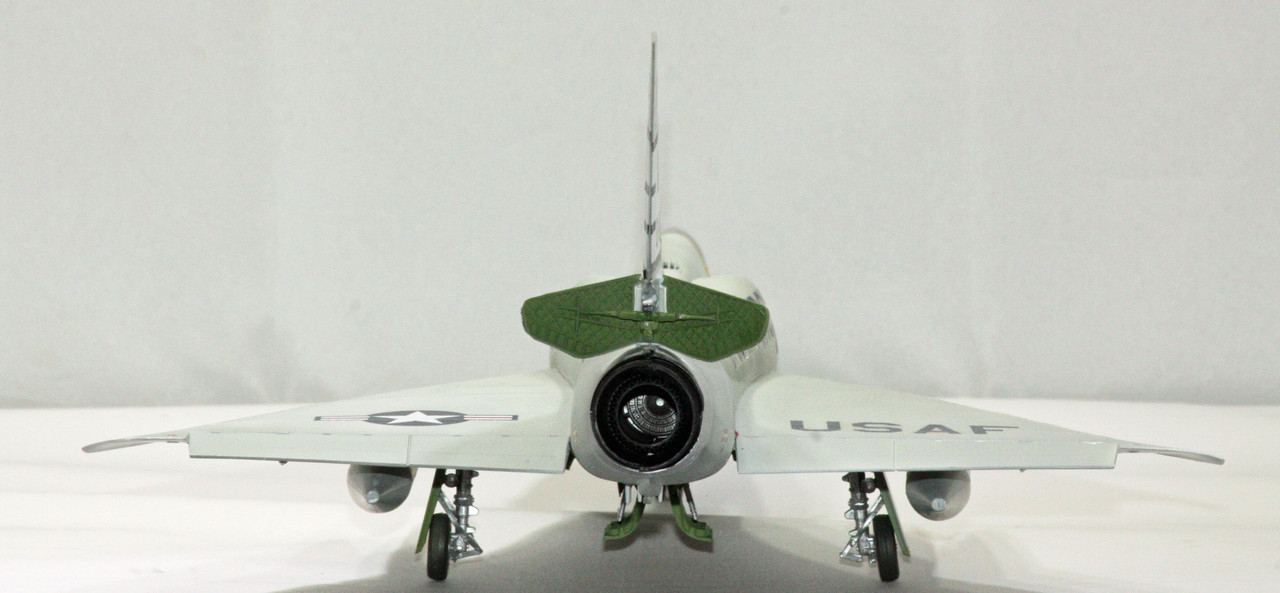
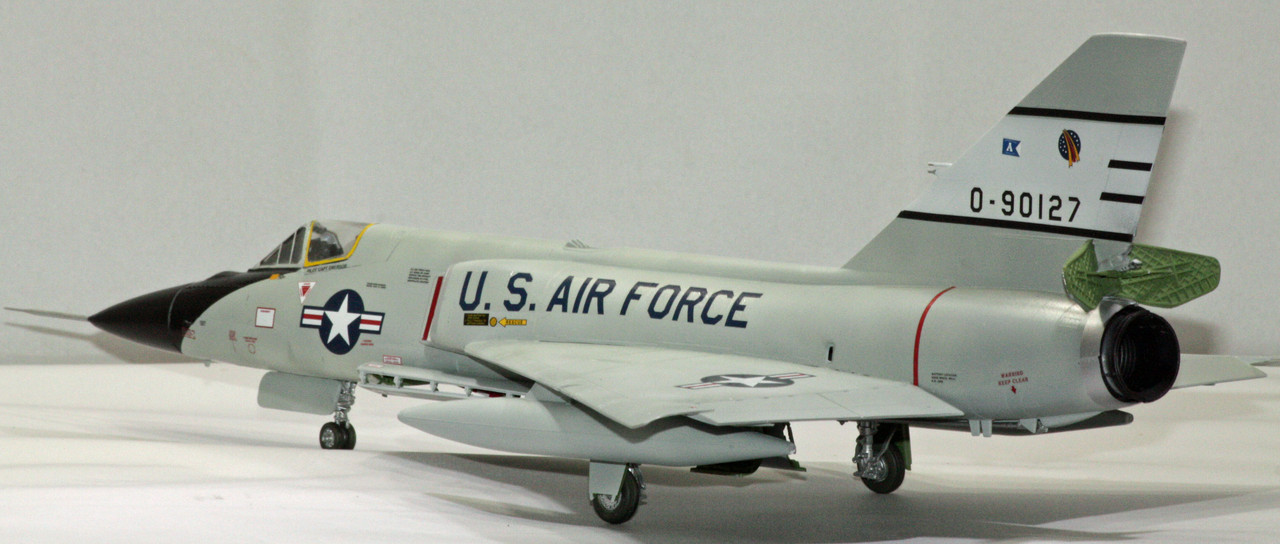

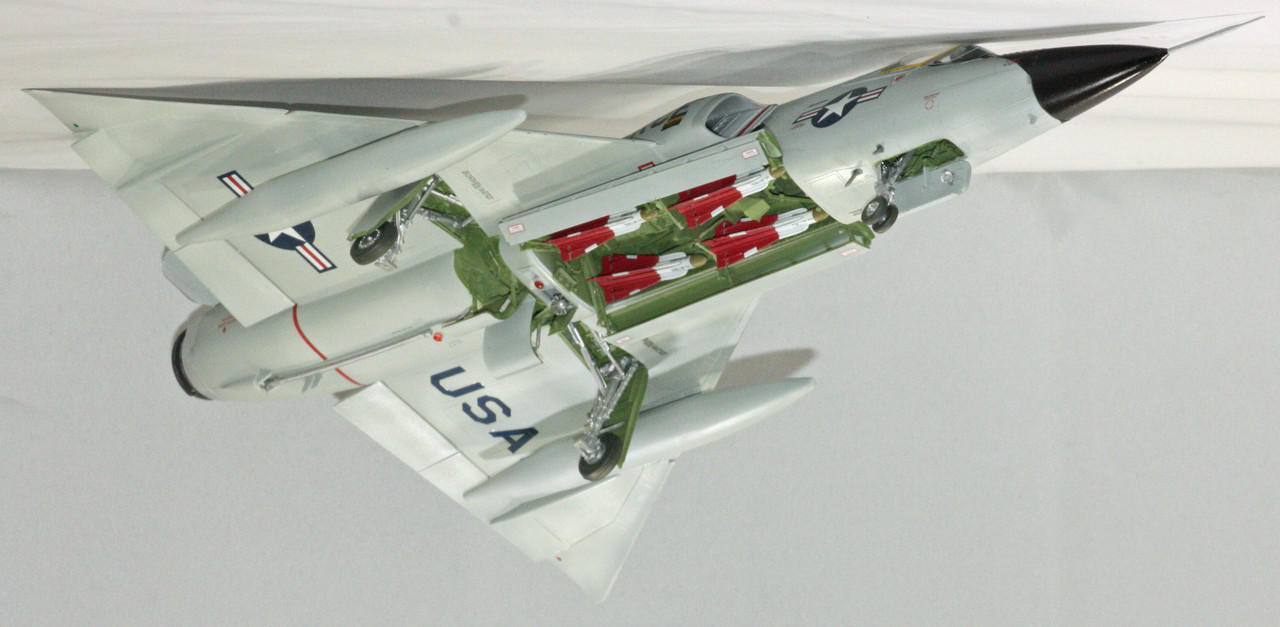
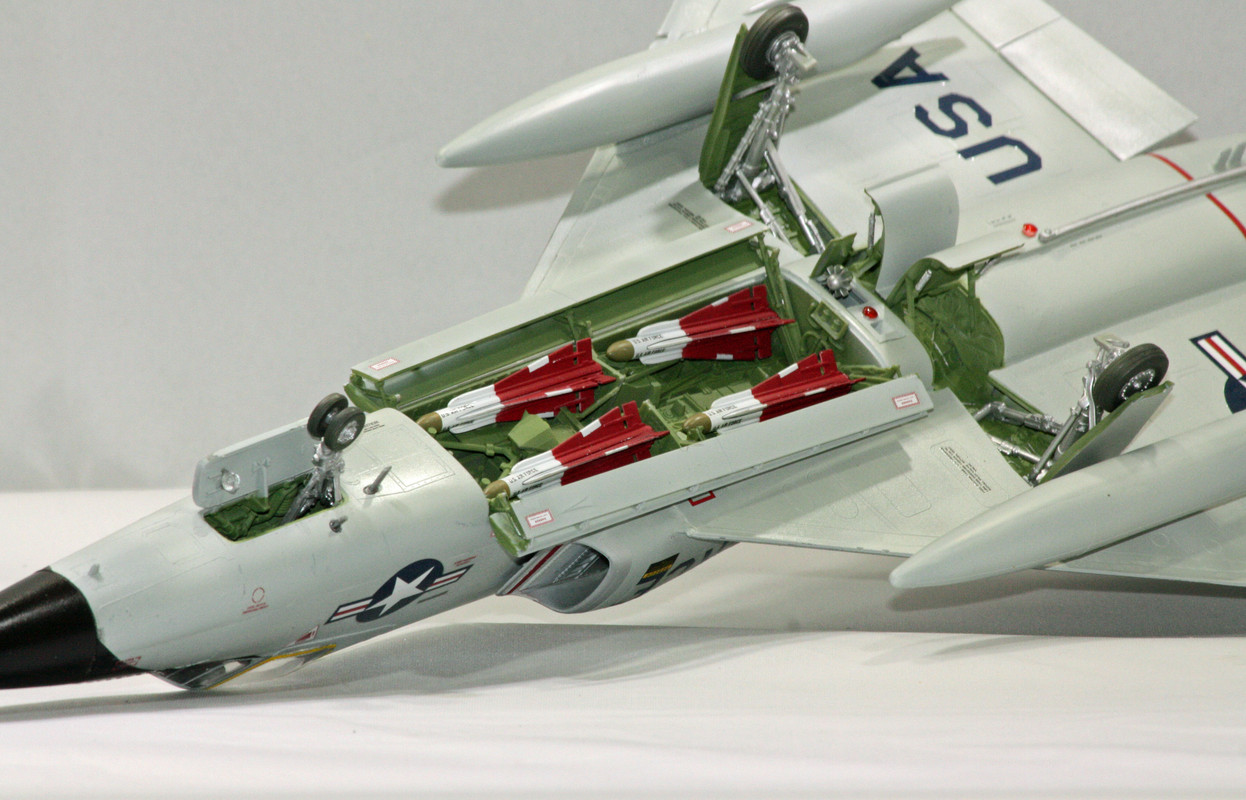
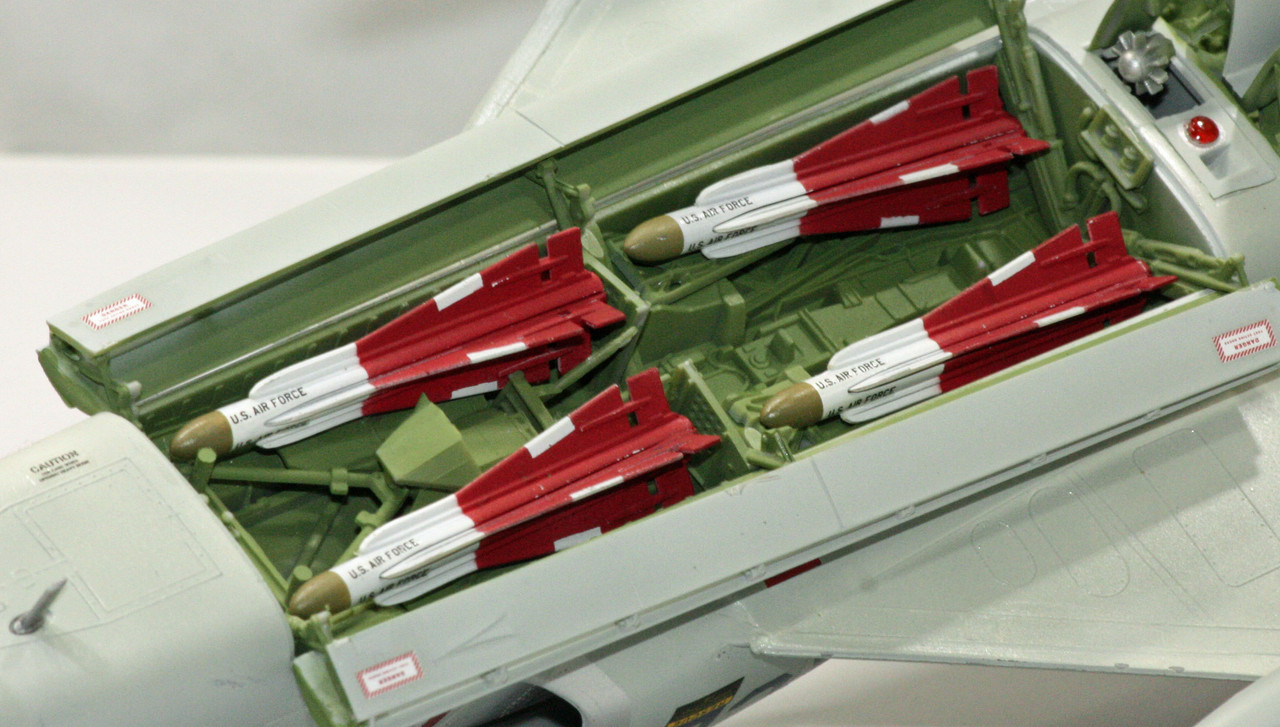
I decided early on that I would build this one quite opposite of my -102, in that I would open up the bomb bay and the airbrakes. I really like the inclusion of the tiny US AIR FORCE decals for each of those missiles.
So ends my Century Series. There is a part of me that would like to build Trumpeter's -100 and -106, and Kitty Hawk's -101A, and I think Meng has done a -102 but not sure what scale that kit is. Trouble is, I don't really have room for more of these given their size and the number of kits I currently have in my stash.
Next up is another Vietnam-era jet, Hobby Boss's F-111A Aardvark in 1/48 scale. I am going to need to watch out for this jet-fatigue that I have suffered with of late, which was the cause of most of the issues I had with this -106, so that I can turn out an Aardvark that is closer to my standards. After I do the Aardvark, I am returning to the Second World War with three Russian aircraft - Yak-1, IL-2m3, and Pe-2, and going to a galaxy far, far away with a Bandai B-Wing starfighter.